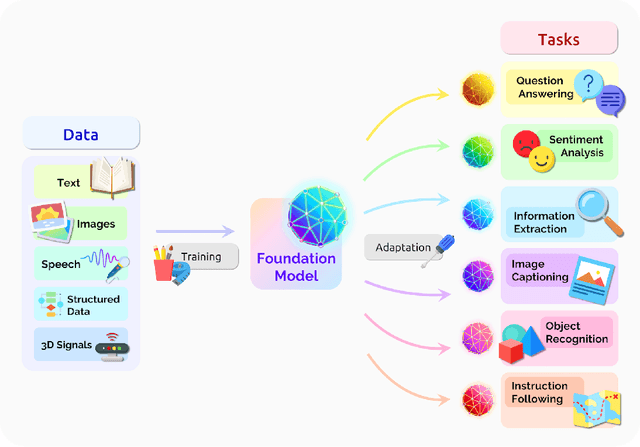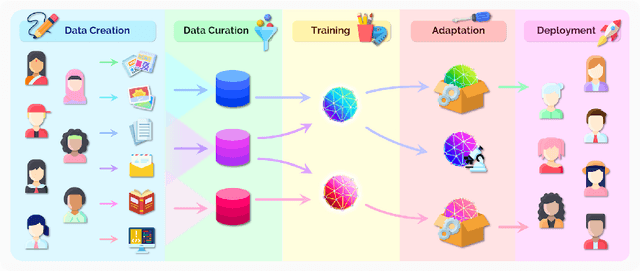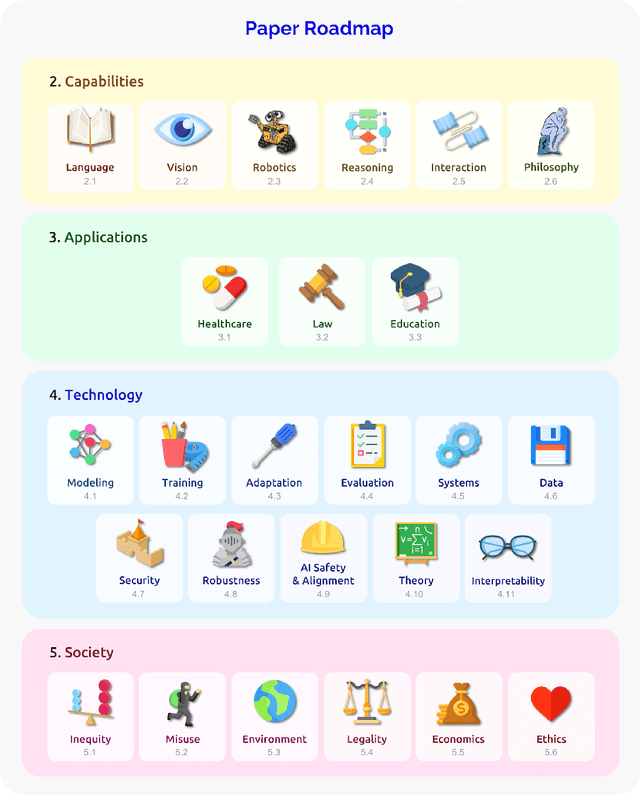Geoff Keeling
Deflating Deflationism: A Critical Perspective on Debunking Arguments Against LLM Mentality
Jun 16, 2025Abstract:Many people feel compelled to interpret, describe, and respond to Large Language Models (LLMs) as if they possess inner mental lives similar to our own. Responses to this phenomenon have varied. Inflationists hold that at least some folk psychological ascriptions to LLMs are warranted. Deflationists argue that all such attributions of mentality to LLMs are misplaced, often cautioning against the risk that anthropomorphic projection may lead to misplaced trust or potentially even confusion about the moral status of LLMs. We advance this debate by assessing two common deflationary arguments against LLM mentality. What we term the 'robustness strategy' aims to undercut one justification for believing that LLMs are minded entities by showing that putatively cognitive and humanlike behaviours are not robust, failing to generalise appropriately. What we term the 'etiological strategy' undercuts attributions of mentality by challenging naive causal explanations of LLM behaviours, offering alternative causal accounts that weaken the case for mental state attributions. While both strategies offer powerful challenges to full-blown inflationism, we find that neither strategy provides a knock-down case against ascriptions of mentality to LLMs simpliciter. With this in mind, we explore a modest form of inflationism that permits ascriptions of mentality to LLMs under certain conditions. Specifically, we argue that folk practice provides a defeasible basis for attributing mental states and capacities to LLMs provided those mental states and capacities can be understood in metaphysically undemanding terms (e.g. knowledge, beliefs and desires), while greater caution is required when attributing metaphysically demanding mental phenomena such as phenomenal consciousness.
Can LLMs make trade-offs involving stipulated pain and pleasure states?
Nov 01, 2024



Abstract:Pleasure and pain play an important role in human decision making by providing a common currency for resolving motivational conflicts. While Large Language Models (LLMs) can generate detailed descriptions of pleasure and pain experiences, it is an open question whether LLMs can recreate the motivational force of pleasure and pain in choice scenarios - a question which may bear on debates about LLM sentience, understood as the capacity for valenced experiential states. We probed this question using a simple game in which the stated goal is to maximise points, but where either the points-maximising option is said to incur a pain penalty or a non-points-maximising option is said to incur a pleasure reward, providing incentives to deviate from points-maximising behaviour. Varying the intensity of the pain penalties and pleasure rewards, we found that Claude 3.5 Sonnet, Command R+, GPT-4o, and GPT-4o mini each demonstrated at least one trade-off in which the majority of responses switched from points-maximisation to pain-minimisation or pleasure-maximisation after a critical threshold of stipulated pain or pleasure intensity is reached. LLaMa 3.1-405b demonstrated some graded sensitivity to stipulated pleasure rewards and pain penalties. Gemini 1.5 Pro and PaLM 2 prioritised pain-avoidance over points-maximisation regardless of intensity, while tending to prioritise points over pleasure regardless of intensity. We discuss the implications of these findings for debates about the possibility of LLM sentience.
On the attribution of confidence to large language models
Jul 11, 2024Abstract:Credences are mental states corresponding to degrees of confidence in propositions. Attribution of credences to Large Language Models (LLMs) is commonplace in the empirical literature on LLM evaluation. Yet the theoretical basis for LLM credence attribution is unclear. We defend three claims. First, our semantic claim is that LLM credence attributions are (at least in general) correctly interpreted literally, as expressing truth-apt beliefs on the part of scientists that purport to describe facts about LLM credences. Second, our metaphysical claim is that the existence of LLM credences is at least plausible, although current evidence is inconclusive. Third, our epistemic claim is that LLM credence attributions made in the empirical literature on LLM evaluation are subject to non-trivial sceptical concerns. It is a distinct possibility that even if LLMs have credences, LLM credence attributions are generally false because the experimental techniques used to assess LLM credences are not truth-tracking.
LLMs achieve adult human performance on higher-order theory of mind tasks
May 29, 2024Abstract:This paper examines the extent to which large language models (LLMs) have developed higher-order theory of mind (ToM); the human ability to reason about multiple mental and emotional states in a recursive manner (e.g. I think that you believe that she knows). This paper builds on prior work by introducing a handwritten test suite -- Multi-Order Theory of Mind Q&A -- and using it to compare the performance of five LLMs to a newly gathered adult human benchmark. We find that GPT-4 and Flan-PaLM reach adult-level and near adult-level performance on ToM tasks overall, and that GPT-4 exceeds adult performance on 6th order inferences. Our results suggest that there is an interplay between model size and finetuning for the realisation of ToM abilities, and that the best-performing LLMs have developed a generalised capacity for ToM. Given the role that higher-order ToM plays in a wide range of cooperative and competitive human behaviours, these findings have significant implications for user-facing LLM applications.
A Mechanism-Based Approach to Mitigating Harms from Persuasive Generative AI
Apr 23, 2024



Abstract:Recent generative AI systems have demonstrated more advanced persuasive capabilities and are increasingly permeating areas of life where they can influence decision-making. Generative AI presents a new risk profile of persuasion due the opportunity for reciprocal exchange and prolonged interactions. This has led to growing concerns about harms from AI persuasion and how they can be mitigated, highlighting the need for a systematic study of AI persuasion. The current definitions of AI persuasion are unclear and related harms are insufficiently studied. Existing harm mitigation approaches prioritise harms from the outcome of persuasion over harms from the process of persuasion. In this paper, we lay the groundwork for the systematic study of AI persuasion. We first put forward definitions of persuasive generative AI. We distinguish between rationally persuasive generative AI, which relies on providing relevant facts, sound reasoning, or other forms of trustworthy evidence, and manipulative generative AI, which relies on taking advantage of cognitive biases and heuristics or misrepresenting information. We also put forward a map of harms from AI persuasion, including definitions and examples of economic, physical, environmental, psychological, sociocultural, political, privacy, and autonomy harm. We then introduce a map of mechanisms that contribute to harmful persuasion. Lastly, we provide an overview of approaches that can be used to mitigate against process harms of persuasion, including prompt engineering for manipulation classification and red teaming. Future work will operationalise these mitigations and study the interaction between different types of mechanisms of persuasion.
What makes for a 'good' social actor? Using respect as a lens to evaluate interactions with language agents
Jan 17, 2024Abstract:With the growing popularity of dialogue agents based on large language models (LLMs), urgent attention has been drawn to finding ways to ensure their behaviour is ethical and appropriate. These are largely interpreted in terms of the 'HHH' criteria: making outputs more helpful and honest, and avoiding harmful (biased, toxic, or inaccurate) statements. Whilst this semantic focus is useful from the perspective of viewing LLM agents as mere mediums for information, it fails to account for pragmatic factors that can make the same utterance seem more or less offensive or tactless in different social situations. We propose an approach to ethics that is more centred on relational and situational factors, exploring what it means for a system, as a social actor, to treat an individual respectfully in a (series of) interaction(s). Our work anticipates a set of largely unexplored risks at the level of situated interaction, and offers practical suggestions to help LLM technologies behave as 'good' social actors and treat people respectfully.
On the Opportunities and Risks of Foundation Models
Aug 18, 2021



Abstract:AI is undergoing a paradigm shift with the rise of models (e.g., BERT, DALL-E, GPT-3) that are trained on broad data at scale and are adaptable to a wide range of downstream tasks. We call these models foundation models to underscore their critically central yet incomplete character. This report provides a thorough account of the opportunities and risks of foundation models, ranging from their capabilities (e.g., language, vision, robotics, reasoning, human interaction) and technical principles(e.g., model architectures, training procedures, data, systems, security, evaluation, theory) to their applications (e.g., law, healthcare, education) and societal impact (e.g., inequity, misuse, economic and environmental impact, legal and ethical considerations). Though foundation models are based on standard deep learning and transfer learning, their scale results in new emergent capabilities,and their effectiveness across so many tasks incentivizes homogenization. Homogenization provides powerful leverage but demands caution, as the defects of the foundation model are inherited by all the adapted models downstream. Despite the impending widespread deployment of foundation models, we currently lack a clear understanding of how they work, when they fail, and what they are even capable of due to their emergent properties. To tackle these questions, we believe much of the critical research on foundation models will require deep interdisciplinary collaboration commensurate with their fundamentally sociotechnical nature.
 Add to Chrome
Add to Chrome Add to Firefox
Add to Firefox Add to Edge
Add to Edge